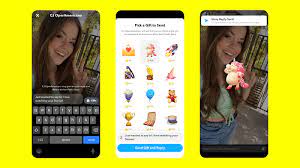Snapchat has published a new report on the potential for branded AR tools to influence shopping behavior, and how augmented reality tools could change the eCommerce process in a range of ways.
The report, conducted in partnership with Publicis Media, incorporates responses from over 1,000 people, aged 13 – 49, across four markets (the US, the UK, France, and Saudi Arabia), which was then cross-matched against industry insights and feedback from users who’ve used AR tools in the shopping process.
And there are some interesting, and likely indicative, data notes here. Here’s a summary of the key points.
First off, Snapchat notes that the usage of AR is rising, and looks to become increasingly influential in future.
“Across the four markets measured, more than half of people aged 13 – 49 claimed to have used AR in the past, and nearly one-third have used branded AR. [And] this behavior is here to stay – more than 3 in 4 of all consumers believe AR technology will play a role in how people shop in the next five years.”
The study also found that, among those who do use AR, more than half of them actively search for AR experiences, with the majority of that search activity coming via camera tools on digital platforms like Snapchat.
Engagement with these branded AR experiences is also driving increased purchase intent, with 2 in 3 consumers who’ve used branded AR for shopping also agreeing that they are more likely to purchase after a branded AR experience.
“These numbers increase when talking about specific branded experiences, such as virtual try-on at 72%”
That’s a particularly relevant stat, because as more platforms add AR try-on tools, for more types of products, your opportunity to utilize such is rising, providing more businesses with more ways to adapt to these rising trends, and increase product awareness and responses in-app.
Of course, the key to these tools lies in ensuring that your branded AR experience also reflects the real-world experience. If a user virtually tries on your make-up, then buys it, and the shade they get doesn’t actually match what they tried on, that could lead to a negative experience – which is why brands still need to utilize a level of AR expertise to maximize such efforts. Which could put AR try-on tools out of the reach of many – but then again, other, newer AR tools, like shoe try-on Lenses and clothing overlays could still provide indicative insight to assist in the purchase process.
Indeed, Snap’s research shows that AR tools can have impact at various stages of the purchase journey.
These are some valuable insights, which may get you thinking about your own potential use of AR tools for promotion.
With Facebook developing new AR wearables, and the rising interest in eCommerce sparking further AR innovation in a practical sense, the technology is now getting more focus, with users moving beyond simply adding dog ears to their selfies and looking to more functional usages of digital overlays and tools that can enhance their everyday experience.
And Snapchat looks set to remain at the forefront of the next AR shift. The app, which has built a significant chunk of its audience on the back of its AR tools, did, at one stage, look set to lose ground to the bigger players who have more resources to develop fully-AR enables wearables, faster, which could have left Snap in the dust in the near future.
But Snapchat is also developing its own AR-enabled spectacles, which it unveiled last week, and coupled with Snap’s established production process for hardware, and lessons learned from the first iteration of its Spectacles device, Snap may actually now be leading the pack on wearable AR development, and the next big step for the tech.
Which is why these insights are so important – because while, right now, AR is mostly a novelty, and these stats may not mean a heap for your strategic mapping, in the very near future they could be hugely indicative, and could help provide guidance in your future planning.
You can read Snapchat’s full ‘How Branded AR Influences Purchasing’ report here.

I don’t think the title of your article matches the content lol. Just kidding, mainly because I had some doubts after reading the article.
Your point of view caught my eye and was very interesting. Thanks. I have a question for you.